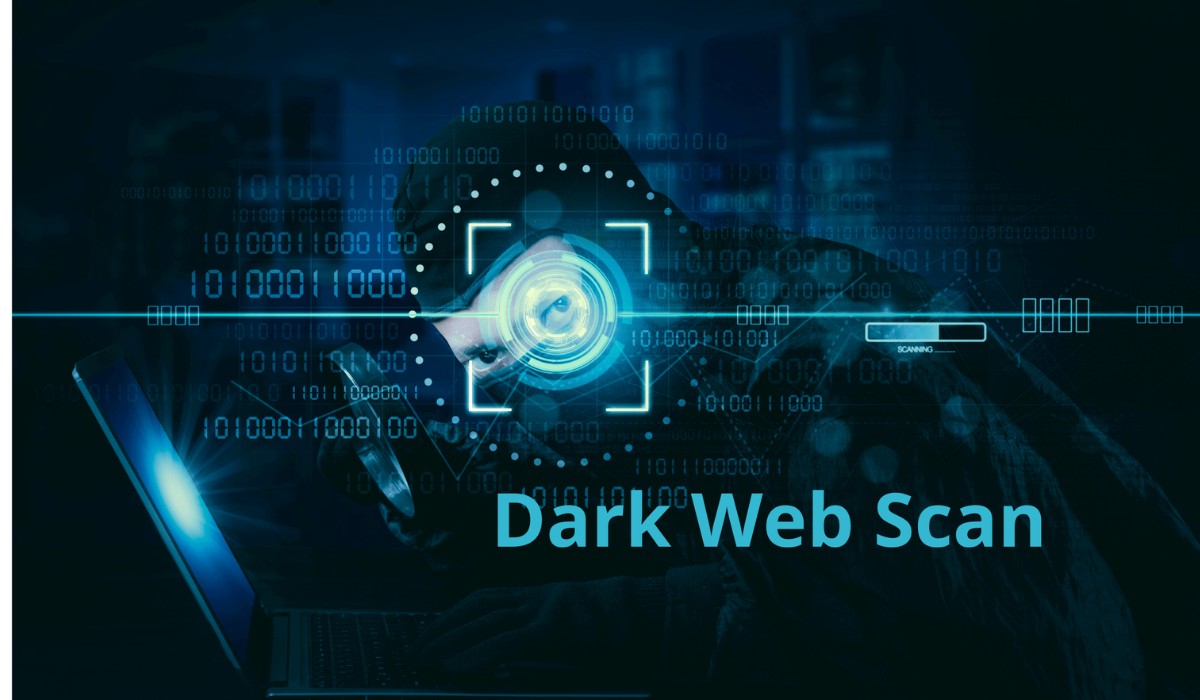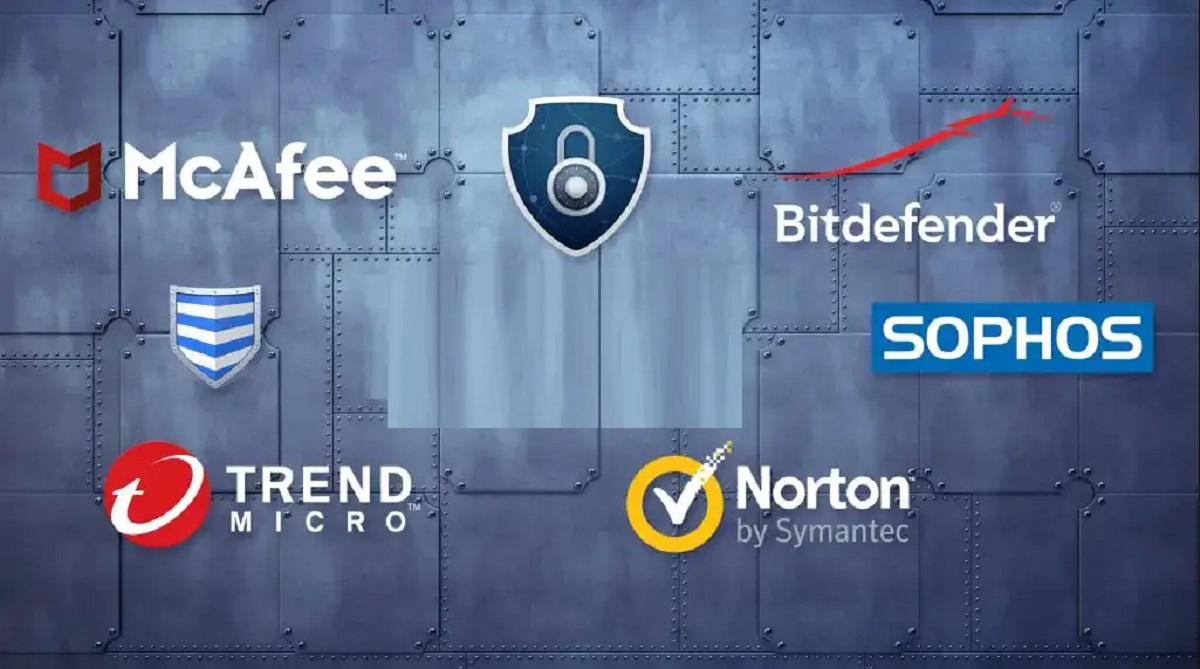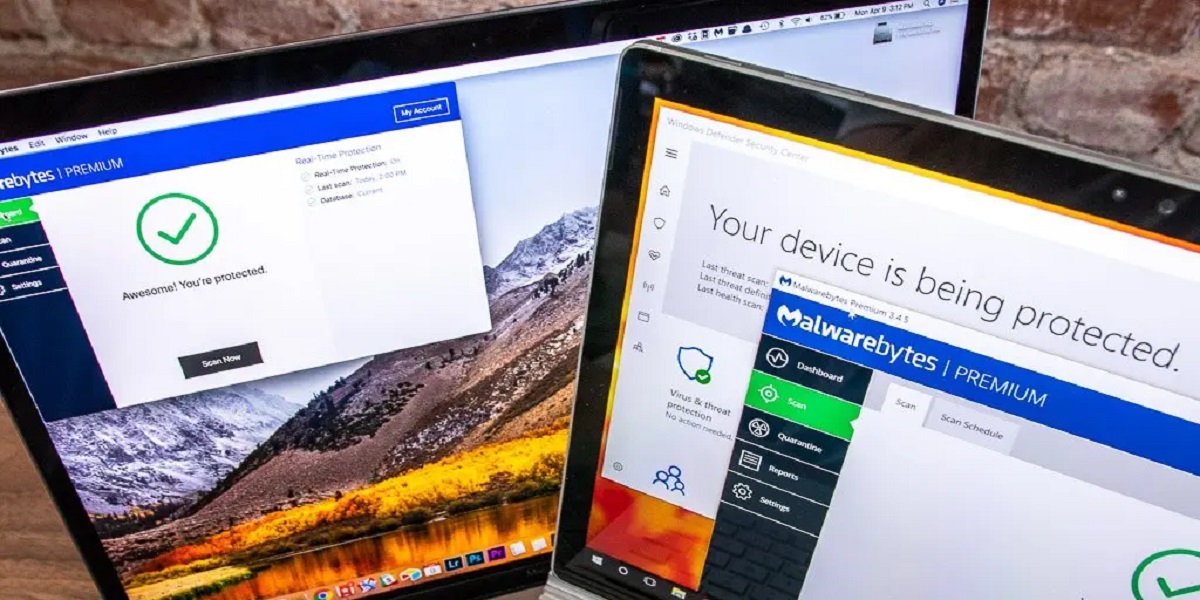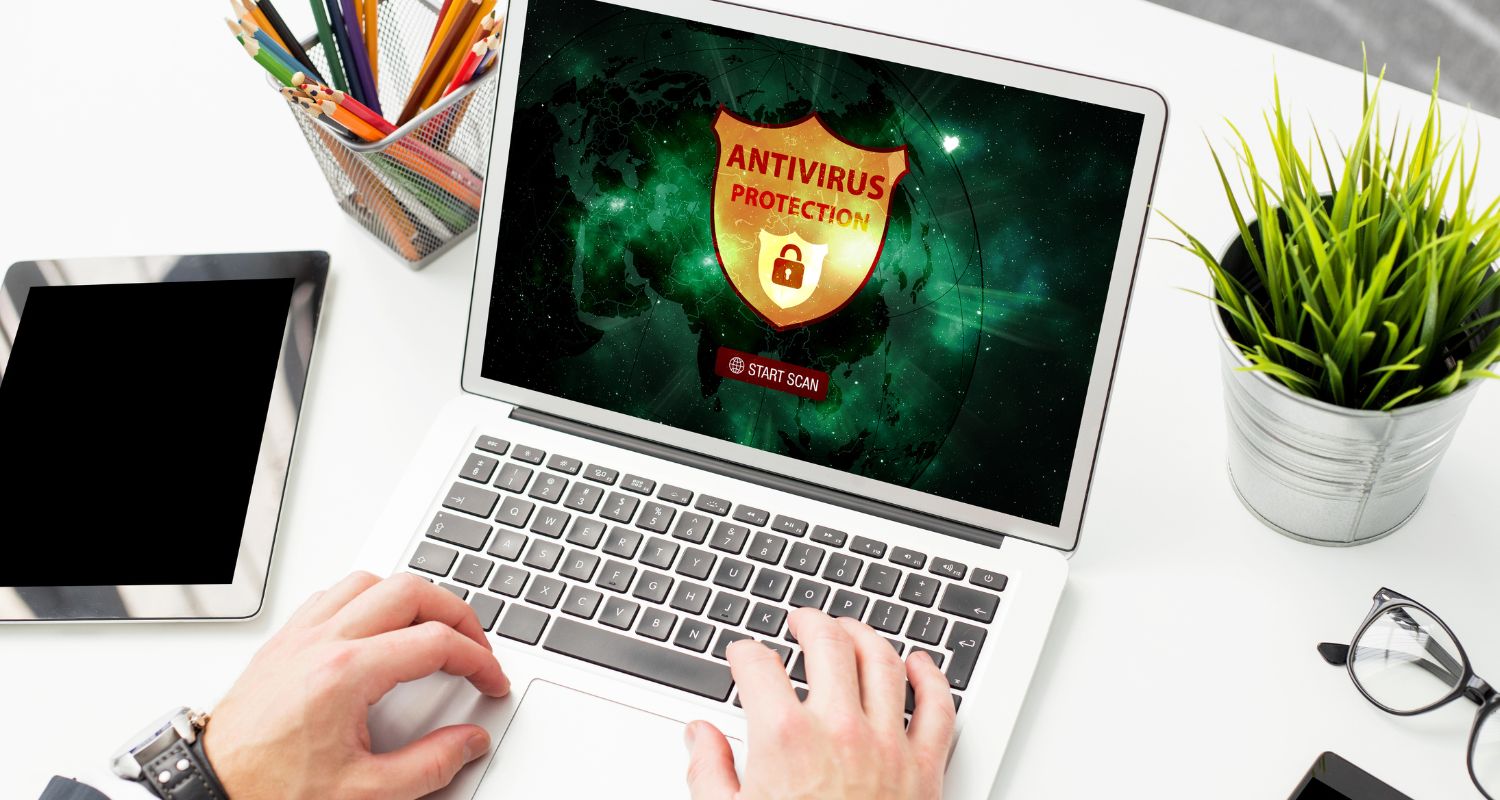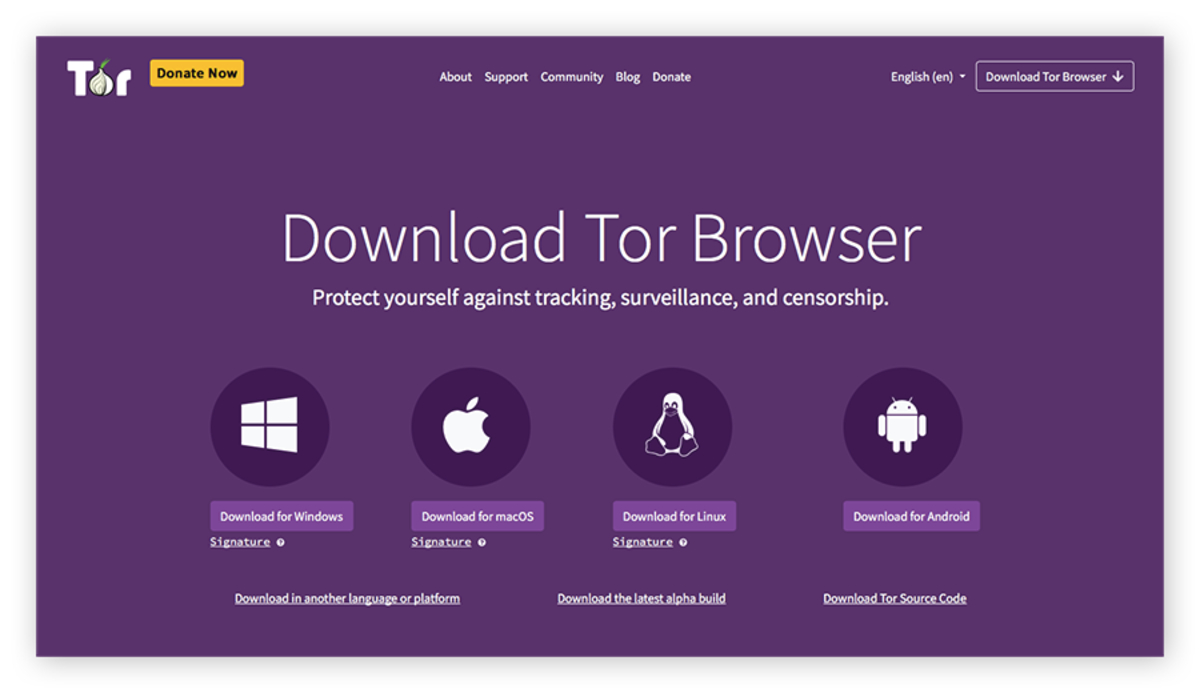Introduction
Welcome to the dark side of the internet, where anonymity reigns and secrets lurk behind every virtual corner. The dark web, a hidden part of the internet that can only be accessed through specific tools, has captured the intrigue of many curious individuals. But how do you navigate this mysterious realm without falling into its dangerous traps?
In this article, we’ll delve into the world of the dark web and explore the methods to safely navigate its depths. Whether you’re a cybersecurity enthusiast or simply want to satisfy your curiosity, understanding how to scan the dark web is essential to protect your personal information and stay secure online.
But first, let’s define what exactly the dark web is. Essentially, it is a part of the internet that is not indexed by traditional search engines and requires special software to access. This hidden network, built on top of the regular internet infrastructure, offers users the ability to communicate and transact anonymously.
Now, you might wonder why anyone would be interested in exploring the dark web. While it’s true that this realm harbors illegal activities and black market operations, there are also legitimate reasons for wanting to explore it. Journalists, researchers, and activists often use the dark web to uncover hidden information, communicate securely, and protect their sources.
However, one must tread carefully in this digital underworld, as cybercriminals and malicious actors pose significant threats. That’s why maintaining privacy and security while browsing the dark web is of utmost importance.
In the following sections, we’ll explore essential steps to navigate the dark web safely. We’ll discuss the use of secure browsers, seek advice from experts, set up virtual private networks (VPNs), access hidden websites, utilize dark web search engines, employ the Tor network, and join online forums and markets securely. Additionally, we’ll provide valuable tips to help you stay safe and avoid scams.
So, if you’re ready to embark on this exciting adventure, let’s dive into the dark web and discover the tools and techniques to scan its depths securely.
Understanding the Dark Web
Before we dive into the intricacies of scanning the dark web, it’s important to have a fundamental understanding of what it is and how it differs from the surface web that we typically browse. The dark web is a part of the internet that is intentionally hidden and requires specific tools to access.
Unlike the surface web, which can be indexed and searched by popular search engines like Google, the dark web resides within encrypted networks such as Tor (The Onion Router). This encryption ensures that users can browse the dark web anonymously and without leaving a digital trail.
One key distinction to note is that the dark web is not solely a hub for illegal activities, as it is often portrayed. While it’s true that illicit goods and services can be found in some corners, the dark web also serves as a haven for individuals seeking privacy and protection from surveillance, such as journalists, activists, and whistleblowers.
The dark web comprises several layers. The surface layer, also known as the Clearnet, is accessible to anyone using standard web browsers and contains websites that are indexed by search engines. Below the surface layer, we encounter the deep web, which includes websites that are not indexed and are typically password-protected, such as online banking systems or private databases.
Finally, at the deepest level, we find the dark web. This part of the internet is intentionally hidden and can only be accessed through specific software, such as the Tor browser. Websites on the dark web use complex domain names that end with .onion instead of traditional extensions like .com or .org.
It’s important to understand that the dark web operates on a different set of rules compared to the surface web. Illegal activities, such as the sale of drugs, weapons, or stolen data, do exist within its depths. Law enforcement agencies and cybersecurity experts work tirelessly to combat these activities, but the anonymous nature of the dark web presents unique challenges.
That being said, it’s crucial to approach the dark web with caution. Even unintentional actions, such as clicking suspicious links or visiting untrustworthy websites, can expose you to potential risks or compromise your online security.
In the next sections, we’ll explore various methods and tools to safely navigate the dark web, protecting ourselves while still satisfying our curiosity or pursuing legitimate purposes.
The Importance of Privacy and Security
When it comes to delving into the dark web, privacy and security should be at the forefront of your mind. The very nature of the dark web, with its anonymity and hidden activities, poses significant risks to your personal information and online safety.
First and foremost, browsing the dark web without proper precautions can leave you vulnerable to cybercriminals and malicious actors who exploit its unregulated environment. These individuals may attempt to steal your sensitive data, such as login credentials or financial information, to engage in identity theft or financial fraud.
Moreover, governments and surveillance agencies worldwide monitor the dark web, aiming to identify and apprehend those involved in illegal activities. Even if you have no intention of engaging in illicit behavior, your online activities and presence can still be subject to scrutiny.
In addition, the mere act of connecting to the dark web can potentially expose your IP address and physical location. This information, if in the wrong hands, can compromise your privacy and make you a target for cyberattacks or even physical harm.
Therefore, it is crucial to take proactive measures to protect your privacy and security while exploring the dark web.
One essential step is to use a secure browser specifically designed for dark web exploration. The Tor browser, for instance, is an excellent choice as it enables anonymous browsing by encrypting your traffic and bouncing it through multiple relays, making it difficult to trace back to you.
Additionally, consider seeking advice from experts in cybersecurity and dark web research. These professionals can provide valuable insights and guidance on how to navigate the dark web safely, while also informing you about the latest threats and vulnerabilities.
Another critical aspect of maintaining privacy and security is setting up a reliable virtual private network (VPN). A VPN creates an encrypted tunnel between your device and the internet, masking your IP address and ensuring that your online activities remain private and secure. This extra layer of protection is particularly important when connecting to the dark web.
Remember, the dark web is notorious for hosting hidden websites that may contain dangerous content or engage in illegal activities. Therefore, it’s crucial to exercise caution and only visit reputable websites recommended by trusted sources.
In the following sections, we’ll delve into specific techniques and tools to enhance your privacy and security while exploring the dark web. By taking these measures, you can minimize the risks and safely navigate this intriguing digital realm.
Using a Secure Browser
When it comes to scanning the dark web, using a secure browser is essential to protect your privacy and ensure a safe browsing experience. While standard web browsers like Chrome or Firefox are suitable for most day-to-day online activities, they are not designed to handle the anonymity and security concerns of the dark web.
One of the most widely used secure browsers for accessing the dark web is the Tor browser. Tor, short for The Onion Router, is an open-source software that allows users to browse the internet anonymously by encrypting their traffic and bouncing it through a network of volunteer-operated servers called nodes or relays.
The Tor browser functions by layering encryption protocols, making it extremely difficult for anyone to track the origin of your internet traffic or identify your physical location. It achieves this by encrypting your data multiple times and routing it through several relays, which strip off a layer of encryption at each step.
Using the Tor browser provides several key benefits when exploring the dark web:
- Anonymity: The Tor network ensures that your IP address and location remain hidden, safeguarding your identity and protecting your privacy.
- Censorship bypass: Tor allows you to access websites and services that may be blocked or censored in your country or region, granting you unrestricted access to information.
- Encryption: The Tor browser encrypts your traffic, preventing anyone from intercepting and deciphering your data.
- Protection from surveillance: By using the Tor browser, you can shield yourself from surveillance by both government agencies and malicious entities.
However, it is important to note that while the Tor browser provides anonymity and security, it is not foolproof. It is still wise to exercise caution when accessing the dark web and refrain from engaging in illegal activities or disclosing personal information.
Additionally, since Tor routes your internet traffic through multiple relays, your browsing experience may be slower compared to using regular browsers. This is due to the extra time it takes for your data to pass through each relay. Nonetheless, the trade-off for enhanced privacy and security is well worth it.
When using the Tor browser, it is also crucial to stay updated with the latest version. Developers continually release updates to address any security vulnerabilities and improve the overall functionality of the browser.
In the next sections, we’ll explore other important steps to safely navigate the dark web, including setting up a virtual private network (VPN) and accessing hidden websites. These measures will provide you with an added layer of protection as you explore the depths of the dark web.
Seeking Advice from Experts
When it comes to exploring the dark web, getting advice and guidance from experts in cybersecurity and dark web research is invaluable. The dark web is a complex and ever-evolving network, and having the expertise of those who have navigated its depths can help you stay safe and make informed decisions.
Experts in this field possess extensive knowledge and experience in understanding the nuances of the dark web, including its hidden dangers and potential pitfalls. They can provide valuable insights on how to minimize risks, protect your privacy, and navigate through the vast sea of information that the dark web offers.
So, how can you seek advice from these experts? Here are a few key strategies:
- Join dark web communities: There are online communities and forums where individuals with knowledge about the dark web gather to discuss various topics. Joining these communities and actively participating can provide you with a wealth of information and access to experts who are willing to share their insights and expertise.
- Follow reputable blogs and podcasts: Many cybersecurity experts maintain blogs or podcasts where they discuss the latest trends, security practices, and insights related to the dark web. Following these sources can keep you updated on the latest developments and best practices.
- Attend cybersecurity conferences and workshops: Cybersecurity conferences often feature sessions dedicated to the dark web, where experts share their knowledge through presentations and workshops. Attending these events can give you the opportunity to learn directly from those at the forefront of dark web research and cybersecurity.
- Engage with reputable researchers and organizations: Reach out to reputable researchers or organizations specializing in cybersecurity and dark web research. Many of them are open to answering questions or providing guidance to individuals interested in exploring the dark web safely.
It is important to exercise caution when seeking advice and ensure that the sources you rely on are reputable and trustworthy. Avoid sources that promote unethical activities or provide inaccurate information. Look for experts who have a track record of credibility and expertise in the field.
By seeking advice from knowledgeable experts, you can gain valuable insights and guidance that will enable you to navigate the dark web safely and make informed decisions while exploring its depths.
In the following sections, we’ll discuss additional measures, such as setting up a virtual private network (VPN) and accessing hidden websites, that will further enhance your ability to safely explore the dark web.
Setting Up a VPN
When it comes to browsing the dark web, setting up a virtual private network (VPN) is an essential step to enhance your privacy, security, and anonymity. A VPN creates a secure and encrypted connection between your device and the internet, ensuring that your online activities remain private and protected.
Here are the key benefits of using a VPN while accessing the dark web:
- Privacy protection: A VPN hides your IP address and encrypts your internet traffic, making it difficult for anyone to trace your online activities back to your real-world identity. This ensures that your privacy is safeguarded, even when exploring the depths of the dark web.
- Anonymity: By routing your internet connection through a VPN server, you can mask your physical location and appear to be browsing from a different geographical location. This adds an extra layer of anonymity and makes it harder for prying eyes to track your online presence.
- Security enhancement: VPNs utilize encryption protocols to protect your data from being intercepted or accessed by malicious actors. This is particularly crucial when dealing with the inherently risky environment of the dark web, where cybercriminals lurk around every corner.
- Access to restricted content: In some cases, accessing certain dark web websites or services may be restricted based on your geographical location or local regulations. By using a VPN, you can bypass these restrictions and gain access to a broader range of content.
When choosing a VPN provider, it is important to opt for a reputable and trustworthy service. Look for providers that have a strong track record of protecting user privacy, strict no-logs policies, and robust encryption protocols.
Setting up a VPN is generally straightforward, and most VPN providers offer user-friendly applications for various platforms and devices. Here are the basic steps to set up a VPN:
- Choose a VPN provider: Research and select a VPN provider that meets your needs in terms of security, privacy features, and performance.
- Install the VPN application: Download and install the VPN application on your device. Most providers support a wide range of operating systems, including Windows, macOS, iOS, and Android.
- Launch the VPN application: Open the VPN application and sign in using your account credentials.
- Select a server: Choose a VPN server location. When accessing the dark web, it is recommended to connect to a server in a location different from your own to further enhance anonymity.
- Connect to the VPN: Click on the “Connect” or “On” button to establish a secure connection through the VPN server.
Once connected to the VPN, all your internet traffic will be routed through the VPN server, encrypting your data and protecting your privacy. This ensures that your online activities, including browsing the dark web, remain secure and anonymous.
In the next sections, we’ll explore additional steps to safely navigate the dark web, including accessing hidden websites and utilizing dark web search engines. These measures, combined with a VPN, will provide you with a comprehensive approach to explore the dark web securely and protect your online presence.
Accessing Hidden Websites
One of the fascinating aspects of the dark web is the existence of hidden websites that cannot be accessed through regular search engines or traditional web browsers. These hidden websites, also known as onion sites, are hosted on the Tor network and require specific tools to access.
To access hidden websites on the dark web, follow these steps:
- Install the Tor browser: Download and install the Tor browser, which is specifically designed for accessing the dark web. The Tor browser is available for most major operating systems and provides a secure and anonymous gateway to the dark web.
- Launch the Tor browser: Open the Tor browser like you would any other application on your device.
- Connect to the Tor network: Once the Tor browser is launched, it will automatically connect to the Tor network. This process may take a few moments as the browser establishes a secure connection through multiple network relays.
- Visit an onion site: To access a hidden website, also known as an onion site, enter its .onion address directly in the Tor browser’s address bar. These addresses are typically a string of random characters followed by “.onion”.
- Explore the hidden website: After entering the onion site’s address, the Tor browser will route your connection through the Tor network and take you to the hidden website. You can now navigate through the content of the site as you would on the surface web.
While accessing hidden websites on the dark web may seem intriguing, it is crucial to exercise caution. Remember that illegal activities and malicious content can be found on some onion sites. Always prioritize your safety and avoid engaging in any illegal activities or disclosing personal information.
Furthermore, be mindful of the information you provide on these websites, as they operate independently from traditional web platforms and may have different security measures or lack of regulation. It’s best to assume that anything you interact with or disclose on the dark web is potentially vulnerable.
It’s essential to stay informed and rely on reputable sources for suggestions and recommendations on onion sites to visit. Dark web communities, forums, and cybersecurity experts can provide valuable insights into legitimate and reliable websites where you can find useful content or engage in discussions.
In the next section, we’ll explore the use of dark web search engines, which can help you discover and navigate through the vast expanse of hidden websites on the dark web.
Exploring Dark Web Search Engines
Navigating the vast and often uncharted territories of the dark web can be challenging without proper guidance. That’s where dark web search engines come in. These specialized search engines are designed to index and provide access to the hidden websites within the dark web.
Dark web search engines function similarly to their surface web counterparts, but they operate within the encrypted and anonymous networks of the dark web. These search engines crawl the dark web, indexing onion sites and organizing them in a searchable database.
Here are a few popular dark web search engines that can aid you in your exploration:
- Torch: Torch is one of the oldest and most well-known dark web search engines. It provides a simple interface that allows users to search for onion sites based on keywords or categories.
- Grams: Grams is a dark web search engine specifically tailored for searching through darknet markets. It allows users to find products, vendors, and forums related to the sale of various goods and services.
- Not Evil: Not Evil is another popular dark web search engine that focuses on indexing and searching onion sites. It prides itself on being censorship-resistant and provides an easy-to-use interface for discovering hidden websites.
When using dark web search engines, it’s important to exercise caution and be aware of the potential risks. Keep the following tips in mind:
- Use at your own risk: The dark web is known for hosting illegal activities, scams, and malicious content. While dark web search engines aim to provide access to relevant and legitimate websites, it’s important to proceed with caution and use these search engines at your own risk.
- Stay updated: Be aware that dark web search engines may index both active and inactive websites, and the content of these sites may change or disappear at any time. Stay updated with the latest information and use multiple sources to verify the credibility and relevance of the websites you find.
- Verify sources and recommendations: Recommendations from trusted sources, such as cybersecurity experts or reputable dark web communities, can help steer you towards legitimate websites. However, always verify the sources and exercise critical thinking when accessing any website on the dark web.
Dark web search engines can be valuable tools for discovering hidden websites and exploring the specialized content within the dark web. Just remember to proceed with caution, prioritize your safety, and make informed decisions when accessing and interacting with the results provided by these search engines.
In the next section, we’ll discuss the utilization of the Tor network, a crucial component for ensuring secure and anonymous browsing on the dark web.
Utilizing Tor Network
When it comes to browsing the dark web, the Tor network plays a pivotal role in ensuring secure, anonymous, and private access. Tor, short for The Onion Router, is an open-source software that enables users to navigate the internet through a series of encrypted connections, offering enhanced privacy and anonymity.
The Tor network operates by relaying internet traffic between multiple volunteer-run servers called nodes or relays. This process involves encrypting and redirecting the traffic through different nodes, effectively obscuring the origin of the connection. As a result, tracing back the traffic to the user’s real IP address or location becomes exceedingly difficult.
Here are some key considerations for effectively utilizing the Tor network:
- Installing the Tor browser: Start by downloading and installing the Tor browser, which is specifically designed to access the dark web. The Tor browser is available for various operating systems and provides a user-friendly interface to connect to the Tor network.
- Launching the Tor browser: Once installed, launch the Tor browser just like you would any other application on your device.
- Connecting to the Tor network: The Tor browser will automatically connect to the Tor network, establishing a secure connection through a series of relays. This may take a few moments as the browser establishes the necessary connections.
- Navigating the dark web: After connecting to the Tor network, you can start exploring the dark web. Enter the .onion addresses of hidden websites directly into the Tor browser’s address bar to access these onion sites.
- Understanding the limitations: While Tor provides enhanced privacy and anonymity, it has its limitations. For instance, the use of Tor can sometimes result in slower browsing speeds due to the multiple relays involved in routing the traffic. Additionally, not all websites on the dark web are guaranteed to be reliable or safe. Exercise caution and use common sense when navigating through onion sites.
It’s important to note that while Tor offers anonymity and security, it does not guarantee absolute protection. It’s essential to stay vigilant and follow best practices to further enhance your privacy and security when using the Tor network.
One important consideration is to keep the Tor browser up to date. Developers regularly release updates to address security vulnerabilities and improve overall performance. Staying up to date with the latest version ensures that you benefit from the most secure browsing experience possible.
Furthermore, it’s important to avoid downloading files or opening unknown attachments while using the Tor network. Malicious files or websites can compromise your device’s security or expose you to potential risks.
The Tor network remains a critical tool to achieve anonymity and privacy on the dark web. By effectively utilizing the Tor network and following best practices, you can browse the dark web with an added layer of security and keep your online activities private and anonymous.
In the next section, we’ll explore the importance of joining online forums and markets securely to enhance your dark web experience while staying safe.
Joining Online Forums and Markets
Within the depths of the dark web, online forums and markets are thriving communities where individuals gather to share information, engage in discussions, and conduct transactions. These platforms can provide valuable insights, connections, and access to a wide range of products and services. However, it’s important to approach these forums and markets with caution and take steps to ensure your safety and security.
Here are some essential considerations when joining online forums and markets on the dark web:
- Research reputable platforms: Take the time to research and identify reputable online forums and markets known for their trustworthy community and proven track record. Look for platforms with positive user reviews, active moderation, and clear policies against illegal activities.
- Use pseudonyms and anonymous accounts: Protect your identity by using pseudonyms, aliases, or anonymous accounts when joining forums or creating marketplace profiles. This helps maintain your anonymity and reduces the risk of your real-life identity being exposed.
- Exercise caution when sharing information: Be cautious about sharing personal or sensitive information on online forums and markets. Only provide essential information when necessary, and be mindful of who has access to your data.
- Verify sellers and buyers: Before engaging in any transactions, take the time to verify the reputation, reliability, and trustworthiness of sellers and buyers on marketplaces. Look for user feedback, ratings, and reviews to assess their legitimacy.
- Use escrow services: When making purchases on dark web marketplaces, consider utilizing escrow services. Escrow services hold funds in a neutral account, releasing them to the seller only after the buyer has received the product or service as agreed upon. This provides an added layer of protection against potential scams or fraudulent activities.
It’s crucial to remember that while some online forums and markets on the dark web may contain legitimate activities, illegal and unsafe content can also be present. Avoid participating in or condoning illegal activities, and immediately report any suspicious or harmful behavior to the forum or marketplace moderators.
Staying informed about the latest security practices and being vigilant about potential risks is essential to maximize your safety and protect your online presence when engaging with online forums and markets on the dark web.
In the next section, we’ll discuss valuable tips and practices to help you stay safe, avoid scams, and maintain your security while exploring the dark web.
Staying Safe and Avoiding Scams
When navigating the dark web, it is crucial to prioritize your safety and take proactive steps to avoid scams and potential threats. The anonymous and unregulated nature of the dark web makes it a breeding ground for illegal activities and malicious actors. Here are some essential tips to help you stay safe:
- Exercise caution and skepticism: Approach everything on the dark web with caution. Be skeptical of claims that seem too good to be true or websites that appear untrustworthy. Trust your instincts and use your judgment to avoid falling victim to scams.
- Research and verify: Before engaging in any transactions or sharing sensitive information, thoroughly research and verify the integrity of the individual, website, or marketplace involved. Look for user reviews, ratings, or trusted recommendations from reputable sources.
- Keep personal information private: Avoid sharing unnecessary personal information online. Be cautious when providing details such as your real name, address, or financial information unless it is entirely necessary and to trusted entities.
- Use secure payment methods: When making purchases, opt for secure payment methods such as cryptocurrencies, as they provide an additional layer of anonymity and reduce the risk of your financial information being compromised.
- Avoid downloading unnecessary files: Be cautious when it comes to downloading files from the dark web, as they may contain malware or other malicious software. Only download files from trusted sources and use robust antivirus software to scan any downloads.
- Be wary of phishing attempts: Dark web scammers may attempt to trick you into revealing sensitive information through phishing attacks, which often resemble legitimate websites or emails. Be cautious of requests for personal information and always double-check the authenticity of websites or emails before sharing any details.
- Stay informed about the latest threats: Continually educate yourself about the latest scams, common fraud techniques, and security best practices related to the dark web. By staying informed, you can better protect yourself and recognize potential red flags.
Remember, the dark web is a high-risk environment, and engaging in illegal activities can have severe consequences. Abide by the law, be mindful of the content and services you access, and report any illegal or harmful activities to the appropriate authorities.
By implementing these safety measures and maintaining a cautious approach, you can navigate the dark web more securely and reduce the likelihood of falling victim to scams or compromising your online security.
Now that we’ve covered essential tips for staying safe, let’s explore the importance of monitoring your online presence to proactively protect your personal information and maintain your digital security.
Monitoring Your Online Presence
When it comes to navigating the dark web or any online environment, it’s essential to monitor your online presence to safeguard your personal information, spot potential security breaches, and maintain control over your digital identity. Monitoring your online presence allows you to detect any suspicious activity and take immediate action to protect yourself. Here are some key steps to consider:
- Regularly review your online accounts: Regularly check your online accounts, including social media, email, and financial accounts, for any unauthorized activity. Look for unfamiliar logins, changes to your account settings, or suspicious transactions.
- Use two-factor authentication: Enable two-factor authentication (2FA) whenever possible, as it adds an extra layer of security by requiring a secondary verification step, such as a code or fingerprint, in addition to your password.
- Monitor your credit: Keep an eye on your credit reports to detect any unauthorized activity or potential identity theft. Utilize credit monitoring services or regularly request free credit reports from reputable agencies.
- Set up alerts: Enable notifications or alerts for your financial accounts, credit cards, and other sensitive platforms. These alerts can notify you of any unusual activity or changes in your accounts.
- Regularly update passwords: Update your passwords frequently, using strong, unique combinations of letters, numbers, and symbols. Avoid using the same password across multiple accounts.
- Be cautious of phishing attempts: Stay vigilant against phishing attempts that may try to trick you into revealing personal information. Be skeptical of unsolicited emails or messages, and avoid clicking on suspicious links or downloading attachments from unknown sources.
- Monitor mentions of your personal information: Regularly search for mentions of your name, email address, or other personal details on search engines or dark web monitoring services. This can help identify if your information has been exposed in any data breaches or is being used fraudulently.
Additionally, consider using reputable identity theft protection services that monitor and notify you of any suspicious activity related to your personal information. These services can provide an extra layer of protection and early detection of any potential security threats.
By actively monitoring your online presence, promptly addressing any security vulnerabilities or suspicious activity, and proactively protecting your personal information, you can minimize the risks and maintain control over your digital identity in both the surface web and dark web realms.
Now that we’ve explored the importance of monitoring your online presence, let’s summarize the key points discussed throughout this article and reiterate the significance of prioritizing privacy, security, and cautiousness while navigating the intriguing and often challenging dark web.
Conclusion
As we conclude this exploration of scanning the dark web, it is evident that venturing into this mysterious realm requires caution, knowledge, and proactive measures to prioritize privacy and security. The dark web presents both opportunities and risks, making it essential to navigate its depths safely and responsibly.
Throughout this article, we have examined the various aspects involved in scanning the dark web. We started by understanding what the dark web is and its distinction from the surface web. We then emphasized the importance of privacy and security, discussing the use of secure browsers and seeking advice from experts.
Furthermore, we highlighted the significance of setting up a virtual private network (VPN) to enhance anonymity and protect against potential threats. We explored accessing hidden websites through the Tor network and utilizing dark web search engines to explore its depths.
We also delved into the importance of joining online forums and markets mindfully, taking precautions to ensure safety and avoid scams. Additionally, we discussed the importance of monitoring one’s online presence to protect personal information and promptly identify any potential security breaches.
Overall, navigating the dark web requires a combination of knowledge, caution, and critical thinking. It is essential to be aware of the potential risks associated with illegal activities, scams, and compromised security. By implementing the suggested measures and staying informed about the latest security practices, you can minimize the risks and explore the dark web in a secure and responsible manner.
Remember, the dark web exists as a realm shrouded in secrecy, offering glimpses into the hidden corners of the internet. However, it is crucial to approach it with an ethical mindset, prioritize legal activities, and prioritize personal safety and security above all else.
As technology continues to evolve and the digital landscape expands, staying informed, maintaining privacy, and adapting security measures will remain paramount. By responsibly engaging with the dark web and the broader online world, we can navigate its depths with curiosity while safeguarding ourselves and our digital identities.







